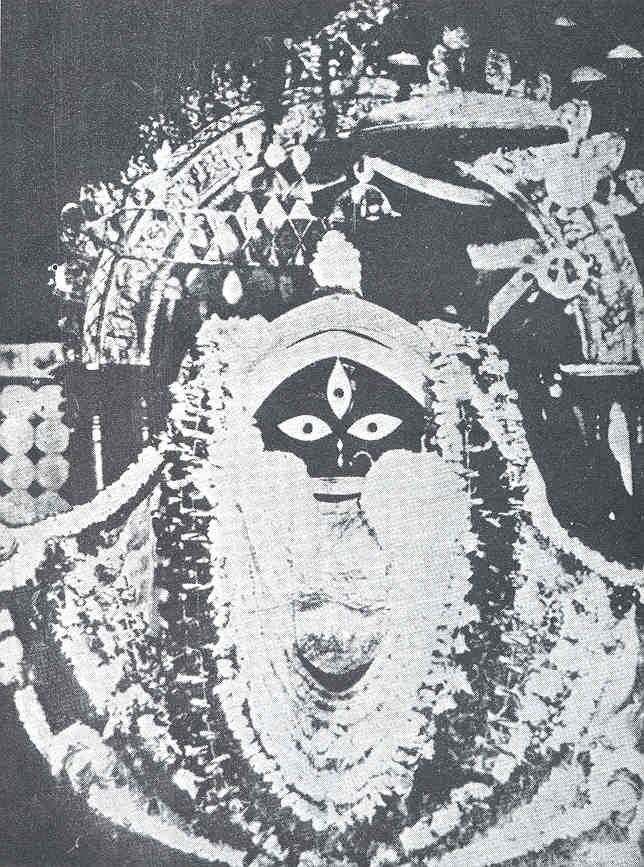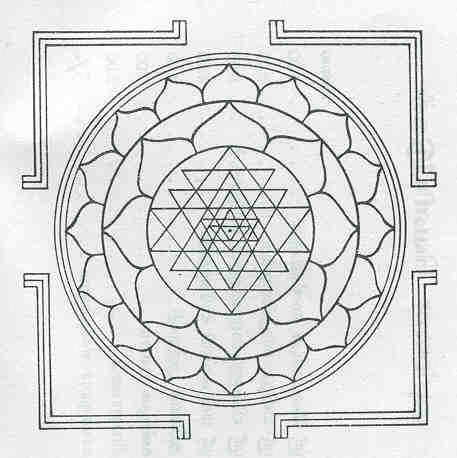The Indian system of beliefs reveres the feminine
form of Divinity as the manifestation of energy - Shakti.

Shakti, the mother Goddess, also
known as Ambaa (mother), or Devi (Goddess) is considered
to be the personification of Cosmic Energy in its dynamic form. It
is believed that Shakti is the power and energy with which the Universe is created,
preserved, destroyed and recreated (by the trinity of Hinduism Bhrahma, Vishnu and
Shiva).
Shakti is worshipped in several
forms. As Rajarajeswari or Kamakshi, she is the Universal
mother. As Uma or Parvati, she is the gentle consort of Shiva.
As Meenakshi - she is the queen of
Shiva. As Durga, she rides the tiger, and bears weaponry. In the
angry and terrifying form of Kaali,
she destroys and devours all forms of evil. As Kaali, she is also the
personification of time, her dark form being symbolic of future which is beyond our
knowledge. Shakti is regarded as the mother of Skanda and Ganesha.
Shakthi Peethams are centers of Shakti
worship, representing sites related to the legend of Daksha
Yagna, Shiva and Sati his consort. Belief
has it that Shiva performed the rudra tandava dance, carrying the dead
body of his consort Sati. The Universe unable to bear the fury of the dance requested Vishnu
to intervene, and Vishnu used is chakra to tear the body into several pieces, and bring
down the fury of Shiva's tandavam. The severed pieces of Sati's body are believed to have
landed in several spots across the region, and these are referred to as Shakti
Peethams.
Belief in Shakti or the feminine
aspect of Divinity is an integral (and popular) element of the religious fabric of the
entire subcontinent. Female guardian deities are revered in all parts of
India. The Shakta Agama deals with the worship protocol adhered to in Devi
temples. There is a shrine to Shakti, or the consort of Shiva in virtually all Saivite
temples throughout the subcontinent.

Tantric practices involving chants,
gestures and yantras (geometric shapes) also govern the worship of
Shakti. Local forms of Shakti, not conforming to Agamic or Tantric rules
are also widely prevalent throughout the length and breadth of the region.
In the Tamil speaking region, Ambaal
- Amman temples and shrines in Saivite temples as well as Maariamman temples are highly
prevalent, as are the Bhagawati
temples in Kerala. Kaali
and Durga are popular deities in the state of Bengal. Kaali
is also revered as an exponent of dance, defeated in the art only by Shiva at Tiruvaalangaadu (and in another legend
at Chidambaram).
The Kamakhya
Devi temple in Assam as well as the Ambaji temple in Gujarat have
been popular centers of Shakti worship. The
Vaishnao Devi temple in the northernmost state of Jammu
and Kashmir as well as the Kanyakumari
temple in the southernmost tip of the Indian subcontinent have both been
centers of Shakti worship for centuries.
Lakshmi represents the feminine
aspect of the preserver Vishnu (of the trinity Bhrahma Vishnu and
Shiva), and is regarded as the bringer of prosperity. The Mahalakshmi
temple at Kolhapur in Maharashtra
regarded as a Shakti Peetham, and the Rangalakshmi
or Ranganayaki shrine at Sree
Rangam, one of the foremost Vaishnavite
centers, are two of the prominent shrines to Mahalakshmi. There is a
shrine to Mahalakshmi in all temples dedicated to Vishnu.
Lakshmi is featured as a parivaara devata in all temples following the Saiva Agamas.
Saraswathi is considered to be the
feminine aspect of the Creator Bhrahma, and is the embodiment of knowledge,
learning and wisdom. Sharada Devi - at the Sringeri Sankara Peetham is hailed as the
embodiment of wisdom. There is a modern temple to Saraswathi
at Pilani in Rajasthan. There are shrines to Saraswathi
in several temples all over South India. There is also a little known Saraswathi Ambal
Temple in interior Tamilnadu.

